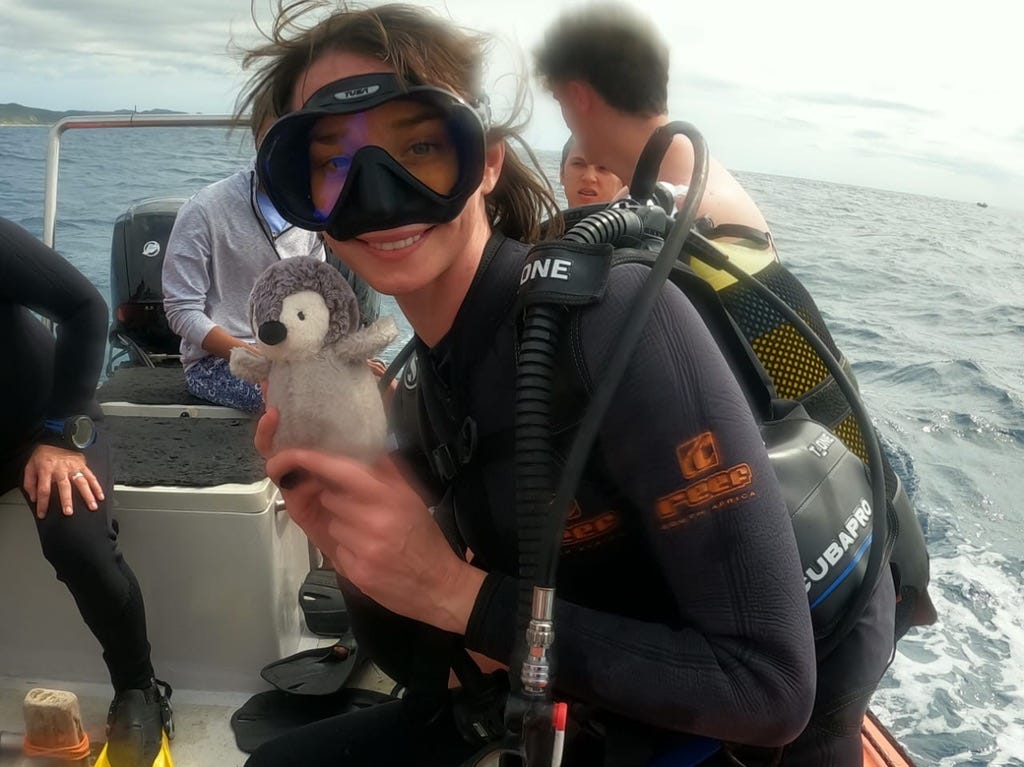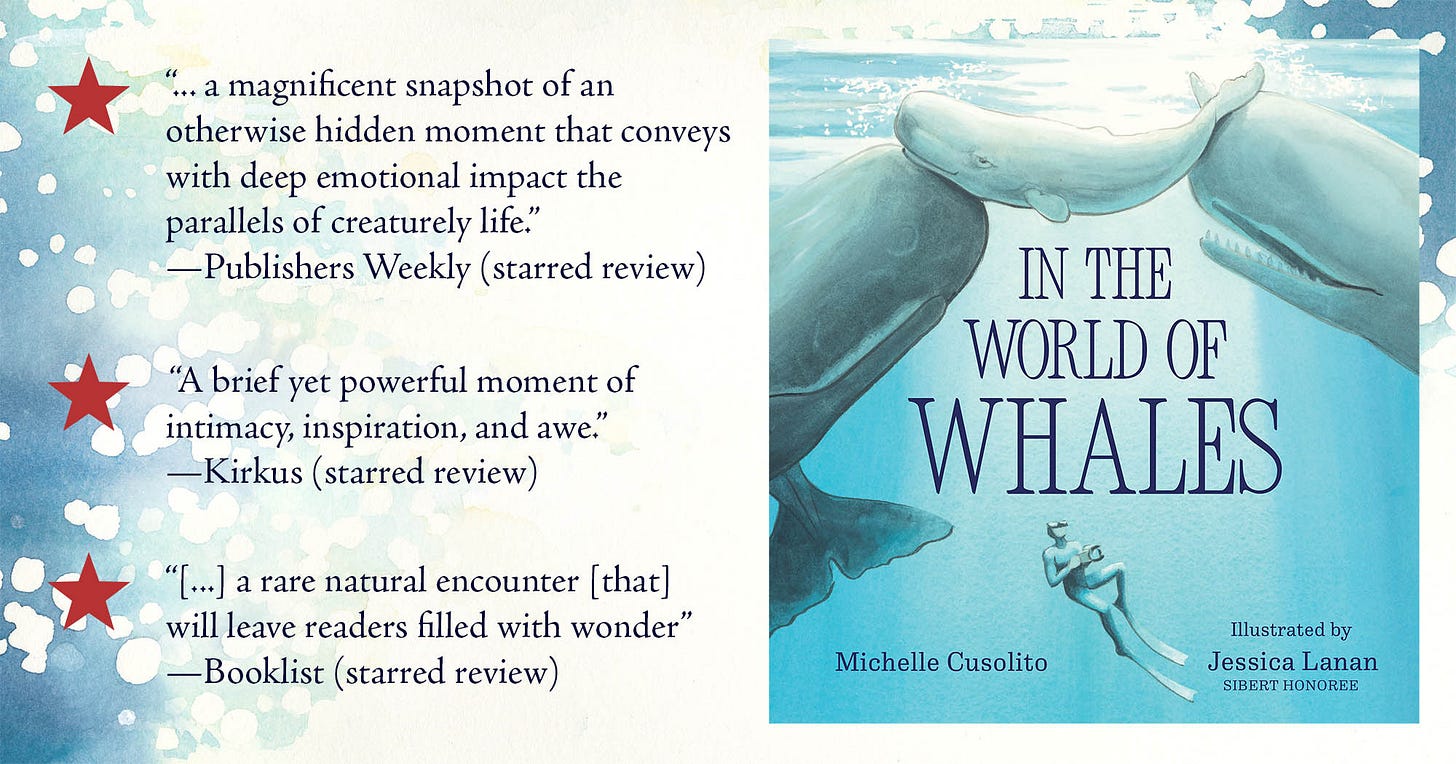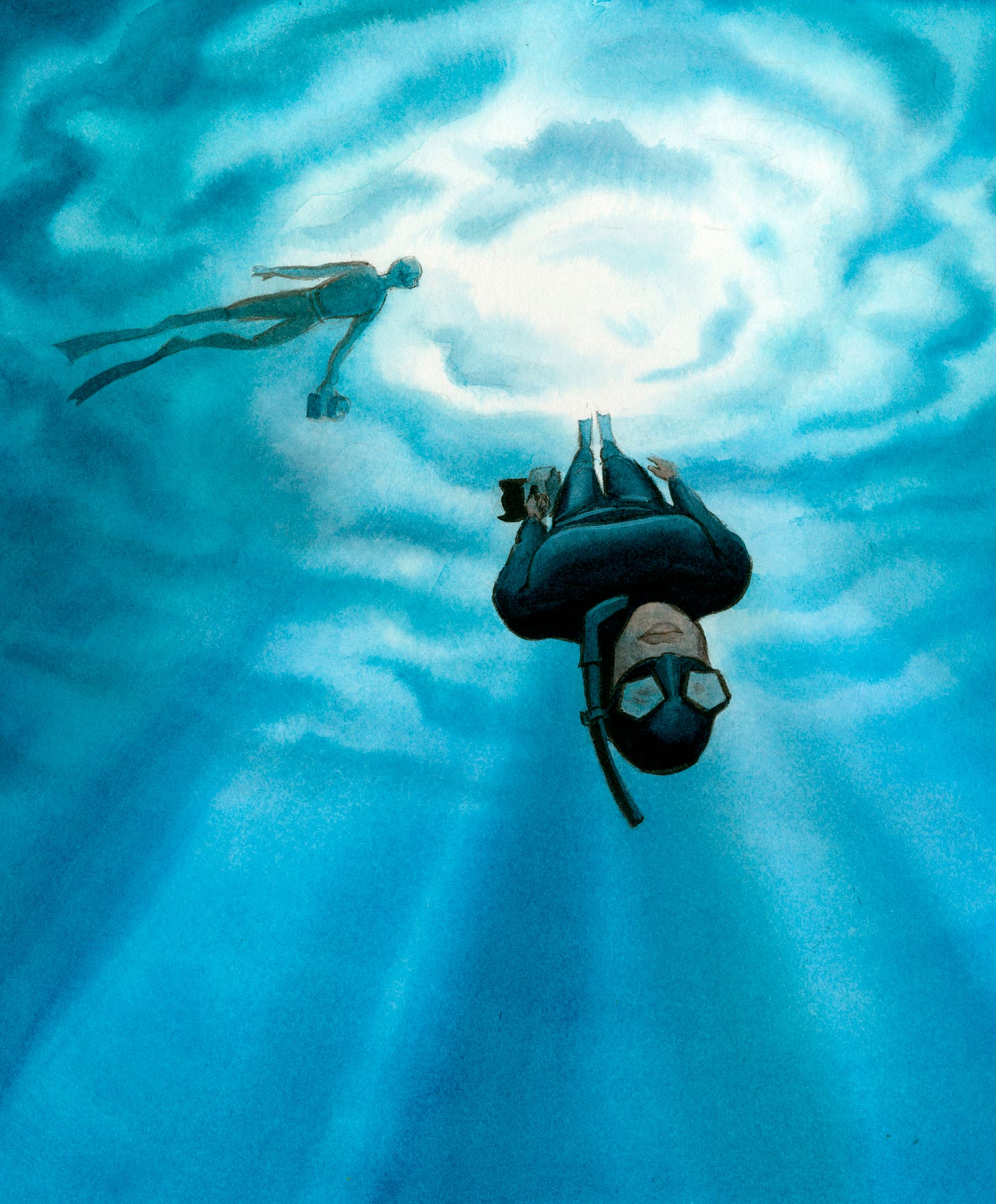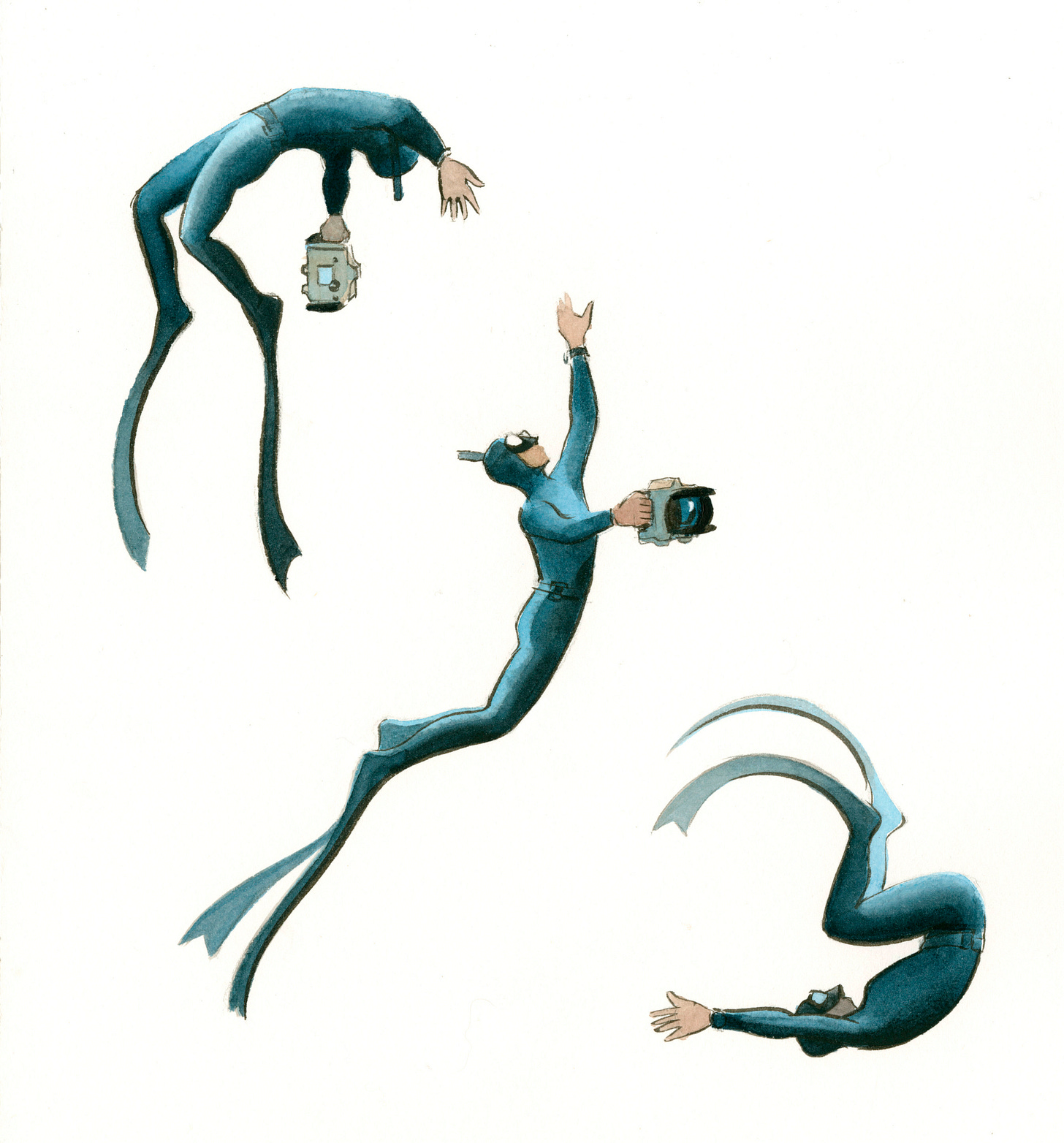Watercolor, Whales, and the Terror of Free Diving
Diving into the World of Whales. Literally.
Dear readers,
My next book, In the World of Whales by Michelle Cusolito comes out in just under a month. So far we’ve celebrated a few exciting wins including starred reviews from Publisher’s Weekly, Booklist, and Kirkus, and a Junior Library Guild Gold Standard selection, my fourth book to hold this distinction. It has also been reprinted prior to publication, so I’d like to say a big thank you to all of you who have already purchased and supported this book!
The story of Whales is based on a true event experienced by Fred Buyle, a Belgian free diver and conservationist living in the Azores. Fred happened to be in the right place at the right time for a sperm whale’s birth. It was a profound experience that left him speechless, and as the illustrator it was my job to help make that awe and wonder come across to the reader.
I live in a landlocked state and did not grow up near any large bodies of water, so I wouldn’t blame you if you were wondering why I was chosen to illustrate this book at all. (You’ll have to ask my editor that question.) But I can tell you how I got started illustrating it. So let’s dive in!
The first thing I do when any new manuscript lands on my desk is a bit of research. I knew nothing about free diving so I had my work cut out for me. I had a vague awareness of the challenges water pressure causes for scuba divers—“the bends” and so forth—but free diving is a whole other discipline.
Like the whales themselves, free divers do not share the same decompression problems that plague scuba divers because they are bringing their air down from the surface. (PV=k! My high school physics lessons are finally getting some use!) But don’t let that trick you into thinking it’s a safe sport. They have other problems. You know, not being able to breathe kind of problems. Passing out underwater problems.
I watched a few freediving documentaries and was soon having nightmares.
As I watched the graceful divers on my screen I began to wonder if I should go underwater myself. I’m a bob-at-the-surface kind of person. Would a real-life dive help me understand the visual and emotional experience of the open ocean and the weightlessness of swimming underwater? Free diving was neither within my comfort zone nor my athletic ability, but perhaps scuba could help me get some sense of what would be like. At the very least it would give me access to some of the things I would need to draw, like the inflatable boats, masks, wetsuits and fins. I was already going to be near an ocean later that month. I signed up for a class.
There wasn’t much time left to fit in the training, so I would have to learn in the local swimming pool and a murky pond off of interstate 70 that the folks at the dive shop generously called “The Quarry.” It’s the sort of pond that has shopping carts lurking at the bottom.
The day of our skills test we assembled and donned our gear. If you’ve never tried to walk around on land in full scuba gear you’re missing out on the unique joy of lumbering down a bank, top-heavy, and tripping over rocks with your fins. My fellow students and I made our way out into water the color of pea soup and paddled to the middle. When the whole group was assembled it was time to sink beneath the murky surface.
Let’s just say that this was not the “world of whales.” Visibility was a couple of feet at best, and about 15 feet down there was a black layer, opaque and very cold. If you let your feet dip down they would disappear into it. Feeling anxious and questioning my choices I floated on the edge of the inky void.
Despite these hazards, everyone in the group passed the skills test and nobody got entangled in a shopping cart or lost in the murk. As a bonus I even got to skip a few skills by accident because the instructor couldn’t see me well enough to tell if I’d completed them or not. I ended the day with my open water certification. But was I ready for the ocean?
A few weeks later it was go time, ready or not. I would be making my first real dive in Sodwana Bay, South Africa, a place of coral reefs and—further off shore—also whales.
I had imagined my first dive with a building, familiar gear, perhaps a safety lecture. It turned out to be a few yawning people and some equipment spread out a tarp. I found a wetsuit that sort-of fit, and tried to figure out how the BCD worked. I was glad that my lessons were fresh. My dive partner and the group leader were experienced and competent, but I was ultimately responsible for myself. No one was going to hover over my shoulder to make sure I hadn’t done something stupid.
We pushed the Zodiac boat out into the churning water.

Sinking down into the ocean for the first time was an otherworldly experience. It felt like magic to do the impossible. We reached the sea floor and I touched it: sandy, with a few small shells and stones scattered about. Everything felt soft. I looked up and saw the boat floating far above, surrounded by light filtering down into the blue.
Our guide pointed out a tiny seahorse floating just above the sand, the Sodwana Pygmy Seahorse, a miraculous creature just a centimeter long and found nowhere else on the planet.
As we made our way along the reef, I had the distinct sense that I had completely submitted to the power of the ocean. There was a strong, rhythmic surge that day, and as it came and went we drifted one way and the other. Everything—the fish, the jellies, the anemones and I—were one, all connected by that immense force. It was like Earth herself had taken hold of us and was rocking us in her arms.
Earth started rocking me a little too much, however, on the way back up. The closer to the surface I got, the stronger the surge and the chop became. It didn’t help that I started popping up like a cork which is exactly what you are not supposed to do, so halfway up I tried swimming back down. All in all it amounted to some serious seasickness. Fortunately vomiting in the ocean is a liberating experience. It feels like it doesn’t even count.
But let’s bring it back to the art. Did this help me? Sometimes it’s hard to know, but I gained a much better understanding of both the physics of diving and the way that creatures move underwater. I also gained an immense amount of appreciation and awe for whales and free divers and what their bodies can do, and for the value of each and every breath we take.
These days Fred Buyle uses his free diving skills for conservation. He’s best known for his work placing tagging devices on sharks and is a talented underwater photographer as well. Fred discourages tourism because of the environmental cost. I respect and understand his perspective, and can’t say whether he would approve of my research. But on the other hand, I believe we must also experience things to build a connection to them. Perhaps this quote puts it best:
We only protect what we love, we only love what we understand, and we only understand what we are taught. -Jacques Cousteau
A picture book is a way for children to learn about their world and develop empathy. I certainly developed more of a connection to the ocean myself through the research for this book. I hope that my artwork can create more interest, support, and care for the whales and the sea, especially for the people (like me) who live far from the shore.
In the World of Whales is available everywhere on June 17. You can preorder it now from your favorite bookseller.
Thanks for reading! If you enjoyed this post please consider sharing it with a friend.














Talk about dedication to your craft and research - wow! You are amazing Jess!
I absolutely loved reading about your experience! I would probably be similarly terrified and in awe. I have this love hate relationship with water. I’m definitely getting a copy of this for my kiddo’s birthday, which is a few days after the book comes out. And let’s be honest… the book is also for me. I can’t wait to see it!!